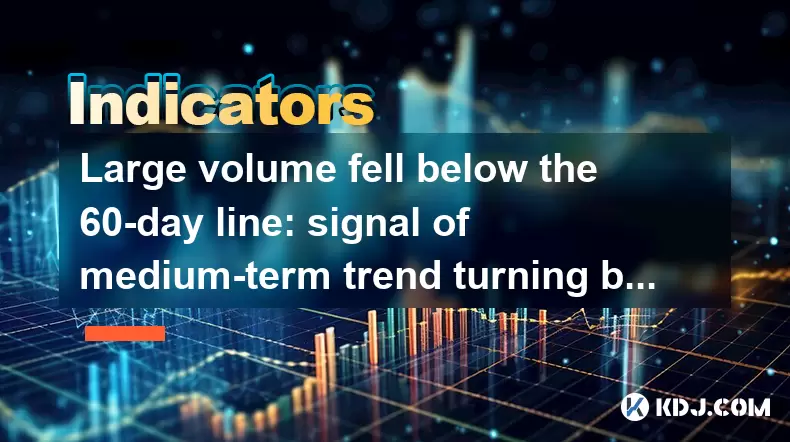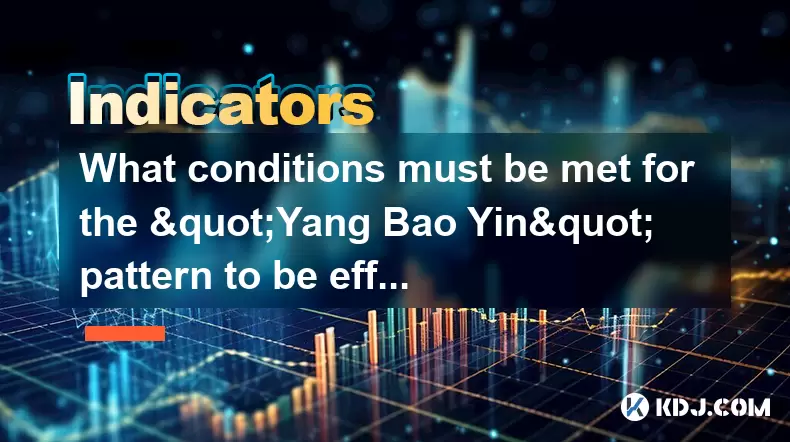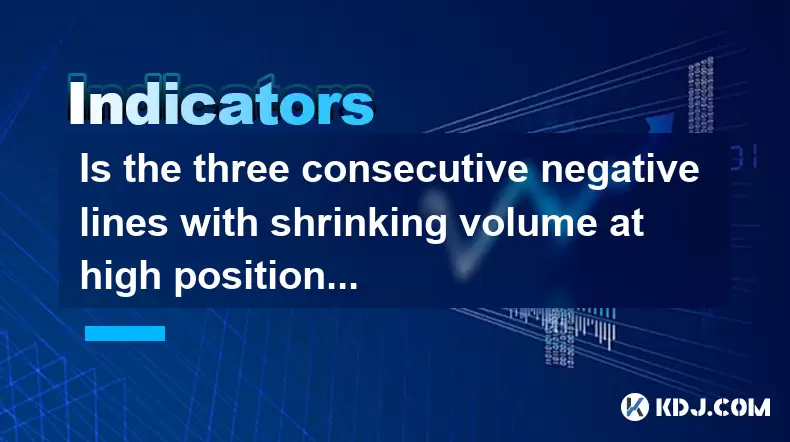-
 Bitcoin
Bitcoin $105,389.9954
1.25% -
 Ethereum
Ethereum $2,554.1045
2.02% -
 Tether USDt
Tether USDt $1.0006
0.01% -
 XRP
XRP $2.1631
2.21% -
 BNB
BNB $651.4909
0.72% -
 Solana
Solana $146.9831
2.13% -
 USDC
USDC $0.9998
0.01% -
 Dogecoin
Dogecoin $0.1783
2.82% -
 TRON
TRON $0.2715
0.12% -
 Cardano
Cardano $0.6373
1.04% -
 Hyperliquid
Hyperliquid $41.9272
8.97% -
 Sui
Sui $3.0368
0.85% -
 Bitcoin Cash
Bitcoin Cash $442.2641
10.39% -
 Chainlink
Chainlink $13.3031
0.89% -
 UNUS SED LEO
UNUS SED LEO $9.0204
1.64% -
 Avalanche
Avalanche $19.3137
2.18% -
 Stellar
Stellar $0.2601
1.39% -
 Toncoin
Toncoin $3.0236
2.54% -
 Shiba Inu
Shiba Inu $0.0...01214
3.91% -
 Hedera
Hedera $0.1591
2.79% -
 Litecoin
Litecoin $86.3865
4.28% -
 Polkadot
Polkadot $3.8186
1.42% -
 Ethena USDe
Ethena USDe $1.0005
0.01% -
 Monero
Monero $310.9934
0.68% -
 Dai
Dai $0.9999
0.02% -
 Bitget Token
Bitget Token $4.5551
1.01% -
 Pepe
Pepe $0.0...01120
5.12% -
 Uniswap
Uniswap $7.4950
6.18% -
 Aave
Aave $286.6126
6.70% -
 Pi
Pi $0.5814
3.91%
Large volume fell below the 60-day line: signal of medium-term trend turning bearish?
A surge in trading volume below the 60-day moving average may signal weakening bullish momentum and potential bearish reversal in crypto markets.
Jun 13, 2025 at 03:42 am

Understanding the 60-Day Moving Average in Cryptocurrency
In cryptocurrency trading, technical analysis plays a crucial role in predicting price movements. One of the most commonly used indicators is the 60-day moving average (MA), which smooths out price data over the last 60 days to provide traders with insights into the medium-term trend. When large volume trades fall below this line, it can be interpreted as a potential shift in market sentiment.
The 60-day MA acts as both a support and resistance level depending on where the price is positioned relative to it. If the price remains above this average, it often signals strength in the asset. Conversely, when volume surges but prices trade below the 60-day MA, it may indicate that large players are selling aggressively, possibly signaling a bearish reversal.
What Does "Large Volume Fell Below the 60-Day Line" Mean?
This phrase refers to a situation where a significant spike in trading volume occurs, but instead of pushing the price above the 60-day MA, the price closes or trades below it. This divergence between volume and price behavior can raise concerns among technical analysts.
- A spike in volume typically suggests strong interest in an asset.
- However, if the price fails to move above the 60-day moving average, it implies that the buying pressure was not strong enough to overcome the selling pressure.
- In some cases, this pattern may precede a pullback or a sustained downtrend, especially if other indicators like RSI or MACD also show weakening momentum.
Historical Examples of Volume Below 60-Day MA in Crypto Markets
Looking at past cycles in the crypto market helps contextualize how significant this signal can be. For instance:
- During the late 2021 Bitcoin correction, there were multiple instances where volume surged while the price remained below the 60-day MA for extended periods. These moments often marked temporary tops or areas of distribution by whales and institutions.
- Similarly, Ethereum experienced similar patterns during its bull run, where large-volume selloffs below the 60-day line preceded short-to-medium term corrections.
These historical patterns suggest that traders should pay attention to volume action relative to key moving averages, especially in highly volatile assets like cryptocurrencies.
How to Confirm Bearish Signals from Volume Below 60-Day MA
Relying solely on one indicator can lead to false signals. Therefore, traders must look for confirmation through additional tools and techniques:
- Check the Relative Strength Index (RSI): If RSI is declining or forming bearish divergences, it strengthens the bearish case.
- Analyze candlestick patterns: Bearish formations like engulfing candles or shooting stars appearing alongside volume spikes below the 60-day MA can offer confirmation.
- Monitor On-chain metrics: Tools like Glassnode or Santiment can help identify whether large holders are accumulating or distributing their holdings during such volume surges.
By combining these methods, traders can better assess whether a medium-term bearish trend is indeed developing.
Practical Steps for Traders Facing This Signal
For active traders, recognizing this pattern early can be critical for risk management and position sizing. Here's what you can do:
- Reduce exposure gradually if the price fails to reclaim the 60-day MA after a high-volume session.
- Set stop-loss orders slightly above recent swing highs to protect against sudden reversals.
- Consider hedging positions using options or inverse ETFs if available in your trading platform.
- Keep a close eye on news and macroeconomic events that might influence short-term volatility and invalidate the bearish signal.
- Use lower timeframes (like 4-hour or daily charts) to find precise entry points for shorting or exiting long positions.
Each step requires careful monitoring and discipline to avoid emotional decision-making.
Frequently Asked Questions
Q: Can volume falling below the 60-day MA still result in a bullish trend?
Yes, it’s possible. Sometimes markets experience sharp corrections followed by strong rebounds. If the price quickly moves back above the 60-day MA with sustained volume, it could indicate healthy consolidation rather than a bearish reversal.
Q: How reliable is the 60-day MA compared to other moving averages?
The 60-day MA is more responsive than longer-term MAs like the 200-day but less sensitive than shorter ones like the 20-day. Its reliability depends on the asset’s volatility and the presence of confirming signals from other indicators.
Q: Should I sell immediately if I see volume fall below the 60-day MA?
Not necessarily. It’s a warning sign, not a direct sell signal. Evaluate your strategy, risk tolerance, and supporting evidence before making any move. Some traders wait for a confirmed breakdown below key support levels before acting.
Q: What timeframes are best for analyzing volume against the 60-day MA?
Daily charts are most effective for assessing medium-term trends. However, intraday traders can use 4-hour or 1-hour charts to spot early signs of weakness or strength around the 60-day MA.
Disclaimer:info@kdj.com
The information provided is not trading advice. kdj.com does not assume any responsibility for any investments made based on the information provided in this article. Cryptocurrencies are highly volatile and it is highly recommended that you invest with caution after thorough research!
If you believe that the content used on this website infringes your copyright, please contact us immediately (info@kdj.com) and we will delete it promptly.
- Fartcoin and SPX6900 Are Two of the Most Dominant Solana Meme Coins Right Now
- 2025-06-14 12:30:12
- XRP Price Action Holds Near Resistance Ahead of June 16
- 2025-06-14 12:30:12
- MicroStrategy Prepared to Take on Competition from Top Firms Like JP Morgan, Saylor Insists
- 2025-06-14 12:25:12
- If You Had $1 Million in Cash, How Would You Manage It?
- 2025-06-14 12:25:12
- "XRP (Ripple) and Ripple's stablecoin RLUSD will boost each other's demand."
- 2025-06-14 12:20:12
- Ukraine's parliament has introduced a draft bill to allow Bitcoin and other digital assets into the National Bank of Ukraine's gold and foreign currency reserves
- 2025-06-14 12:20:12
Related knowledge

How to calculate the probability of trend continuation after the MACD column divergence?
Jun 14,2025 at 08:01am
Understanding MACD Column DivergenceThe Moving Average Convergence Divergence (MACD) is a widely used technical indicator in cryptocurrency trading. The MACD column, also known as the histogram, represents the difference between the MACD line and the signal line. When price makes a new high or low but the MACD histogram does not confirm this movement, a...

What are the volume requirements for adjusting the K line in the "rising three methods" pattern?
Jun 14,2025 at 07:50am
Understanding the 'Rising Three Methods' Pattern in Cryptocurrency TradingThe 'rising three methods' pattern is a bullish continuation candlestick formation that traders often use to identify potential upward momentum in cryptocurrency price charts. This pattern typically appears during an uptrend and suggests that the trend is likely to continue after ...

What conditions must be met for the "Yang Bao Yin" pattern to be effective?
Jun 14,2025 at 06:42am
Understanding the 'Yang Bao Yin' Pattern in Cryptocurrency TradingThe Yang Bao Yin pattern is a candlestick formation commonly observed in technical analysis within the cryptocurrency market. This pattern typically signals a potential bullish reversal after a downtrend. However, for this pattern to be effective and reliable, certain conditions must be m...

Is the three consecutive negative lines with shrinking volume at high positions a signal that the main force has finished shipping?
Jun 14,2025 at 09:56am
Understanding the Concept of Three Consecutive Negative LinesIn cryptocurrency trading, three consecutive negative lines refer to a situation where an asset's price chart shows three successive candlesticks with closing prices lower than their opening prices. This pattern typically indicates bearish sentiment in the market. When this occurs at high posi...

Is it an opportunity for the long positive line with large volume to break through the platform and then shrink back?
Jun 14,2025 at 04:42am
Understanding the Long Positive Line with Large VolumeIn technical analysis, a long positive line refers to a candlestick pattern where the closing price is significantly higher than the opening price, often indicating strong buying pressure. When this occurs alongside large volume, it suggests that market participants are actively involved in pushing t...

How to grasp the 60-minute KD oversold + 15-minute bottom divergence?
Jun 14,2025 at 06:15am
Understanding the 60-Minute KD Oversold SignalThe KD indicator, also known as the Stochastic Oscillator, is a momentum oscillator that compares a particular closing price of a cryptocurrency to its price range over a given time period. When analyzing 60-minute charts, traders often look for oversold conditions in the KD line, which typically occur when ...

How to calculate the probability of trend continuation after the MACD column divergence?
Jun 14,2025 at 08:01am
Understanding MACD Column DivergenceThe Moving Average Convergence Divergence (MACD) is a widely used technical indicator in cryptocurrency trading. The MACD column, also known as the histogram, represents the difference between the MACD line and the signal line. When price makes a new high or low but the MACD histogram does not confirm this movement, a...

What are the volume requirements for adjusting the K line in the "rising three methods" pattern?
Jun 14,2025 at 07:50am
Understanding the 'Rising Three Methods' Pattern in Cryptocurrency TradingThe 'rising three methods' pattern is a bullish continuation candlestick formation that traders often use to identify potential upward momentum in cryptocurrency price charts. This pattern typically appears during an uptrend and suggests that the trend is likely to continue after ...

What conditions must be met for the "Yang Bao Yin" pattern to be effective?
Jun 14,2025 at 06:42am
Understanding the 'Yang Bao Yin' Pattern in Cryptocurrency TradingThe Yang Bao Yin pattern is a candlestick formation commonly observed in technical analysis within the cryptocurrency market. This pattern typically signals a potential bullish reversal after a downtrend. However, for this pattern to be effective and reliable, certain conditions must be m...

Is the three consecutive negative lines with shrinking volume at high positions a signal that the main force has finished shipping?
Jun 14,2025 at 09:56am
Understanding the Concept of Three Consecutive Negative LinesIn cryptocurrency trading, three consecutive negative lines refer to a situation where an asset's price chart shows three successive candlesticks with closing prices lower than their opening prices. This pattern typically indicates bearish sentiment in the market. When this occurs at high posi...

Is it an opportunity for the long positive line with large volume to break through the platform and then shrink back?
Jun 14,2025 at 04:42am
Understanding the Long Positive Line with Large VolumeIn technical analysis, a long positive line refers to a candlestick pattern where the closing price is significantly higher than the opening price, often indicating strong buying pressure. When this occurs alongside large volume, it suggests that market participants are actively involved in pushing t...

How to grasp the 60-minute KD oversold + 15-minute bottom divergence?
Jun 14,2025 at 06:15am
Understanding the 60-Minute KD Oversold SignalThe KD indicator, also known as the Stochastic Oscillator, is a momentum oscillator that compares a particular closing price of a cryptocurrency to its price range over a given time period. When analyzing 60-minute charts, traders often look for oversold conditions in the KD line, which typically occur when ...
See all articles

























































































